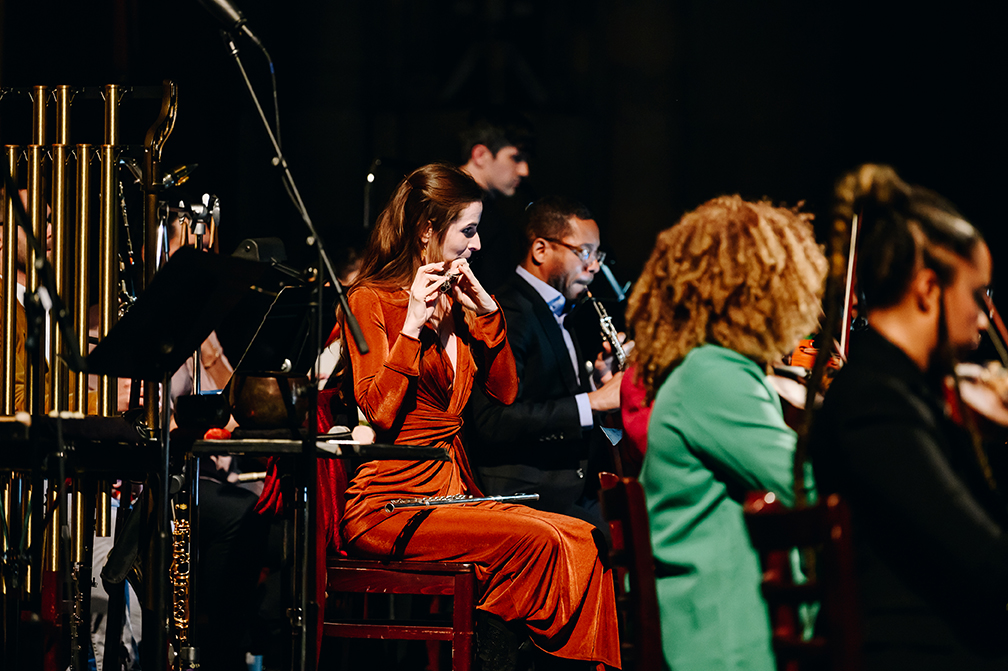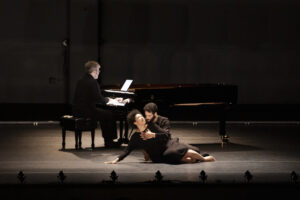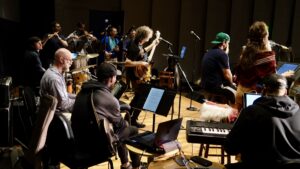
El Nino: Nativity Reconsidered
By David Patrick Stearns
12/23/2022 Musical America
John Adams’s opera-oratorio El Niño – Nativity Reconsidered has always felt imposing, immense, and possibly something that could be a Christmas concert piece. Which could be one reason why the enterprising soprano Julia Bullock has been taming it in revised versions that do not require grand opera forces. At half the original two-hour length, no video elements, and minimal staging but atmospheric lighting, El Niño, neither cheapened nor watered down, became more viable in American Modern Opera Company’s production December 21 at the Cathedral Church of St. John the Divine. How viable is yet to be determined, for it needs to be heard in a more conventional, detail-friendly acoustic. Even with an unobtrusive sound design and communicative English enunciation by a savvy cast—including Bullock, Anthony Roth Costanzo, and Davóne Tines, all in top form—the total package needs sharp-focus circumstances to access its full power. But the always loose-limbed piece never felt truncated in this iteration, thanks to Bullock and conductor Christian Reif, who is credited with the artful re-assemblage. One can always quibble with their choices, but this El Niño was in good hands and apparently has the blessing of its creators.
As premiered in 2000, the original was a complete environment, Peter Sellars’s libretto drawing on an expansive range of literary sources, Adams’s score almost Ives-ian in its propulsive, inventive eclecticism. From that art-installation melding of take-from-it-what-you-will, the piece here emerges more clearly with a nativity narrative, one that Bullock describes as “how the promise of new life (or evolution) is often accompanied by … violence.”
This is her second version, not as slimmed down as what was presented at The Cloisters in 2018. One significant aria and some choral parts (sung by Choir of Trinity Wall Street) have been restored. The 11-piece orchestra is now up to 26. The occasional use of spoken word rather than sung text maintains the shorter running time but, in this version, feels more like rhetorical pronouncements than preaching interludes (compared with the video of the Cloisters version).



